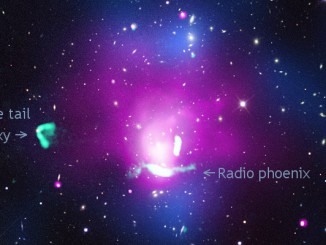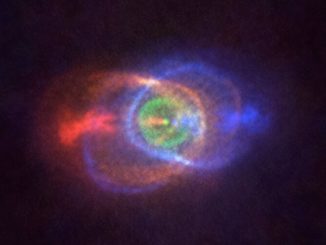
As relatively small stars (those less than ten times the mass of our Sun) near the end of their lives, they throw off their outer layers and become white dwarf stars, which are very dense and occupy about the same volume as the Earth. The high gravity that occurs under such density causes the lighter elements, such as hydrogen or helium, to float to the surface of the star, masking the heavier elements below.
While combing through data from the Sloan Digital Sky Survey (SDSS), Souza Oliveira Kepler, et al. identified SDSS J124043.01+671034.68 — SDSS J1240+6710 for short — a 0.56-solar-mass white dwarf located some 1,200 light-years away. With its outer layer of light elements stripped away, SDSS J1240+6710 reveals a nearly pure layer of oxygen.
Several different theories have predicted that the outer layer of a white dwarf can be stripped, but SDSS J1240+6710 provides the first evidence of this phenomenon. One possibility is that interactions with a nearby companion in a binary star caused SDSS J1240+6710 to bare its oxygen envelope. Another possibility is that a massive pulse of burning carbon from the centre of the star, emanating outwards, eliminated the lighter elements.



